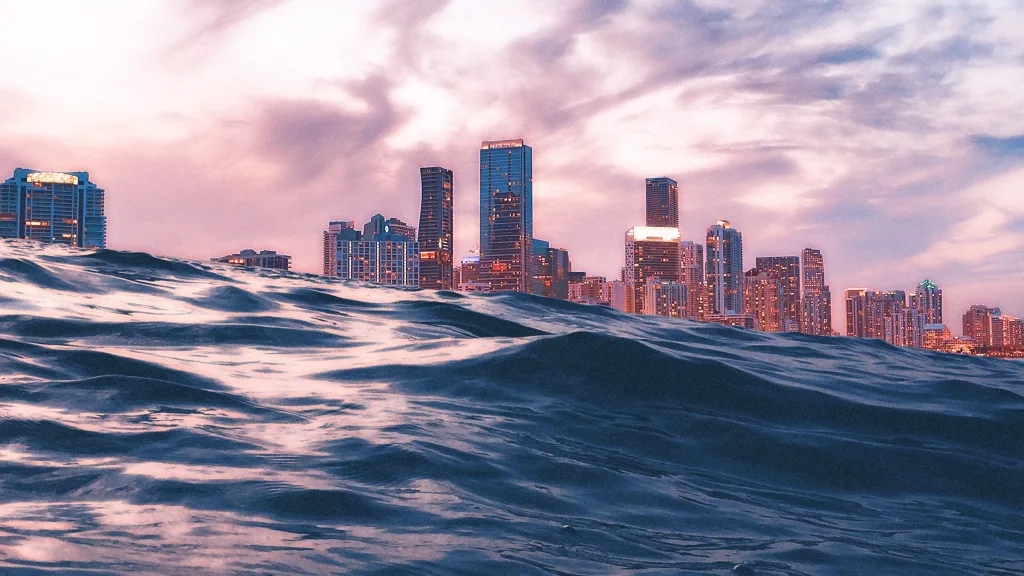A new study suggests that if the world doesn’t make major cuts in emissions, there’s a chance that so much ice could melt that sea levels could rise more than two meters by the end of the century–or roughly twice as much as researchers predicted in the last major climate report. If that happens, the planet could lose more than 1 million square miles of land, larger than the combined area of Alaska, Texas, and California. It would displace both critical farmland and as many as 187 million people.
For coastal cities, it would be devastating. To see what it might look like in a handful of cities in the U.S., we tried plugging two meters of sea level rise into Climate Central’s Surging Seas Risk Zone mapping tool, which shows submerged land in blue. Miami Beach and Atlantic City would be underwater, as would large swaths of Boston and Charleston. The actual results could be even worse, since the tool doesn’t account for issues like subsidence; land along the East Coast, for example, is sinking at the same time as the ocean rises. You can look up a rough map of your own city’s possible future here.
The chance that the ocean will rise this quickly is relatively small. The study, based on predictions from 22 scientists who are experts in ice sheets, gives it a 5% chance of happening by the end of the century. Still, as one researcher puts it, you wouldn’t want to board an airplane that had a 5% chance of crashing. The older climate report, from the Intergovernmental Panel on Climate Change, considered only more likely scenarios–like a rise of a little more than a meter, which would still be bad, but could make it a little more possible for cities to adapt.
“Sea level rise of two meters in the space of the next 80 years is, in our view, unmanageable,” says Michael Oppenheimer, a geosciences professor at Princeton and one of the authors of the paper. “We’re not going to get our act together to be able to deal with it for a lot of reasons.” The good news: There’s still time to avoid it by cutting emissions from the current business-as-usual path. “This is all conditioned on a certain emissions trajectory,” he says. “If the world slows emissions down then we’re not going to get to these high sea levels, at least not for hundreds of years.”
Recognize your brand’s excellence by applying to this year’s Brands That Matter Awards before the early-rate deadline, May 3.









